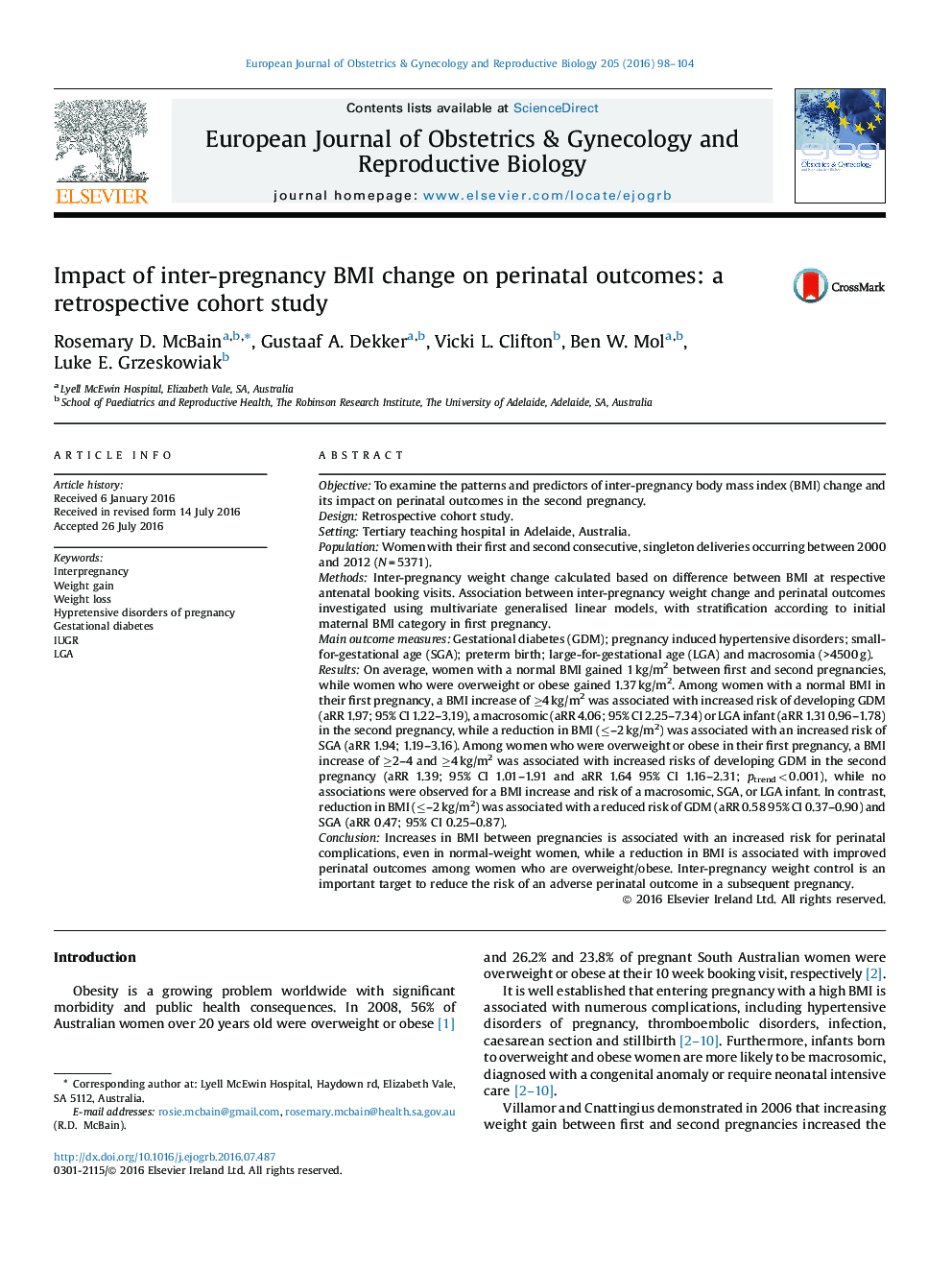| کد مقاله | کد نشریه | سال انتشار | مقاله انگلیسی | نسخه تمام متن |
|---|---|---|---|---|
| 3919314 | 1599776 | 2016 | 7 صفحه PDF | دانلود رایگان |
ObjectiveTo examine the patterns and predictors of inter-pregnancy body mass index (BMI) change and its impact on perinatal outcomes in the second pregnancy.DesignRetrospective cohort study.SettingTertiary teaching hospital in Adelaide, Australia.PopulationWomen with their first and second consecutive, singleton deliveries occurring between 2000 and 2012 (N = 5371).MethodsInter-pregnancy weight change calculated based on difference between BMI at respective antenatal booking visits. Association between inter-pregnancy weight change and perinatal outcomes investigated using multivariate generalised linear models, with stratification according to initial maternal BMI category in first pregnancy.Main outcome measuresGestational diabetes (GDM); pregnancy induced hypertensive disorders; small-for-gestational age (SGA); preterm birth; large-for-gestational age (LGA) and macrosomia (>4500 g).ResultsOn average, women with a normal BMI gained 1 kg/m2 between first and second pregnancies, while women who were overweight or obese gained 1.37 kg/m2. Among women with a normal BMI in their first pregnancy, a BMI increase of ≥4 kg/m2 was associated with increased risk of developing GDM (aRR 1.97; 95% CI 1.22–3.19), a macrosomic (aRR 4.06; 95% CI 2.25–7.34) or LGA infant (aRR 1.31 0.96–1.78) in the second pregnancy, while a reduction in BMI (≤–2 kg/m2) was associated with an increased risk of SGA (aRR 1.94; 1.19–3.16). Among women who were overweight or obese in their first pregnancy, a BMI increase of ≥2–4 and ≥4 kg/m2 was associated with increased risks of developing GDM in the second pregnancy (aRR 1.39; 95% CI 1.01–1.91 and aRR 1.64 95% CI 1.16–2.31; ptrend < 0.001), while no associations were observed for a BMI increase and risk of a macrosomic, SGA, or LGA infant. In contrast, reduction in BMI (≤–2 kg/m2) was associated with a reduced risk of GDM (aRR 0.58 95% CI 0.37–0.90) and SGA (aRR 0.47; 95% CI 0.25–0.87).ConclusionIncreases in BMI between pregnancies is associated with an increased risk for perinatal complications, even in normal-weight women, while a reduction in BMI is associated with improved perinatal outcomes among women who are overweight/obese. Inter-pregnancy weight control is an important target to reduce the risk of an adverse perinatal outcome in a subsequent pregnancy.
Journal: European Journal of Obstetrics & Gynecology and Reproductive Biology - Volume 205, October 2016, Pages 98–104
